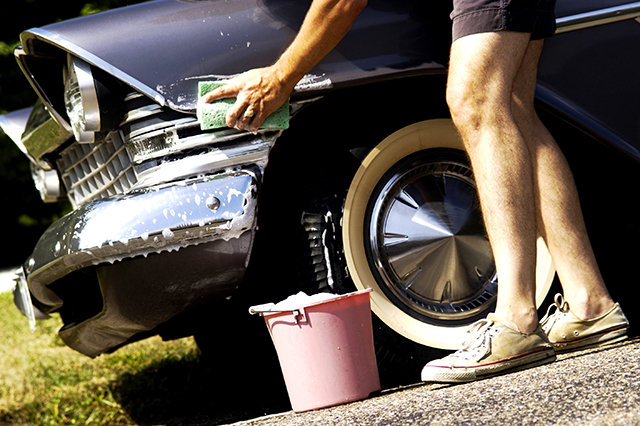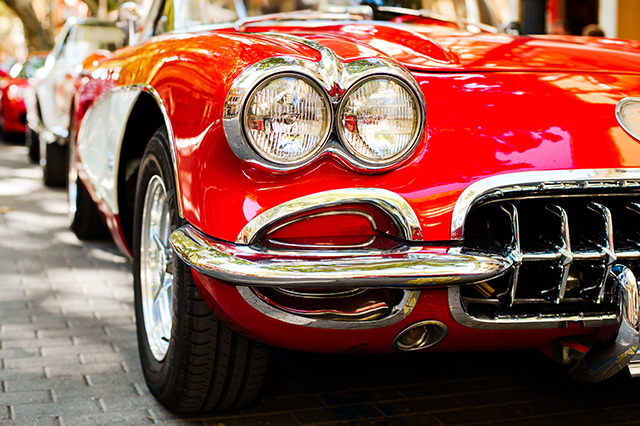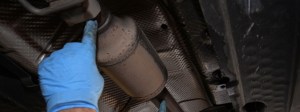A classic car is a special purchase. It’s not something you buy out of necessity, but rather because it speaks to your heart. It could be the car you dreamed of owning when you were a kid, or maybe it’s the one your parents owned years ago. You might even buy classic cars as an investment in the hopes that their value will increase over time. No matter why you buy a classic car, it deserves special care to keep it looking good and ready to drive for years to come.
Keep it Covered
Classic cars are beautiful and it’s tempting to leave yours sitting in the driveway for the world to see. There’s nothing wrong with showing off your pride and joy, but don’t leave it exposed to the elements all the time. Weather is your car’s enemy. The sun, rain and wind take their toll. The sun fades paint and sensitive interior fabrics, rain leaves residue on that shiny exterior you worked so hard to wax, and wind blows dirt and sand against that beautiful finish leaving scratches.
Whenever you aren’t driving the car, make sure it’s protected from the elements. Keeping classic cars in a garage whenever they’re not in use is the best way to protect them from harm. If you don’t have a garage, then at least put a car cover over your classic. Those who live in winter climates (and who won’t be taking their classic car out when the weather turns) should consider a storage service to keep the car protected.
Classic Cars Like Clean
It’s important to keep your classic car clean, especially if you drive it during bad weather. Salt from winter driving, mud and dirt from rainy weather, and even the road grime that builds up on a sunny day should be cleaned off. Make sure you clean the outside and inside of your car and occasionally give it a thorough detailing.
It’s also wise to get the undercarriage washed to be sure corrosive chemicals aren’t harming delicate parts. You might not be able to see the undercarriage, but if it’s covered with salt and chemicals, you’ll know it’s dirty when parts begin to rust. A thorough cleaning keeps your car looking good and helps avoid costly repairs.

Classic Cars Need Insurance
Even if you don’t drive it as often as your modern car, classic cars still need insurance because accidents happen to everyone. Classic car insurance includes many of the same items found in a traditional auto insurance policy. Typically, there’s property coverage to repair or replace your car and any property, as well as collision and comprehensive coverage. There’s also liability coverage in case you’re involved in an at-fault accident, and medical and personal injury protection for the medical expenses of you and your passengers.
Talk to a AAA insurance agent about protecting your car with classic car insurance.
Perform Regular Maintenance
Classic cars require much of the same regular maintenance as modern cars. You’ll need to keep the oil filled and get it changed at regular intervals. The windshield wiper blades should be replaced any time they’re leaving streaks behind and the tires need to be checked every month to ensure the tread is still good. Even if you don’t drive your classic car as often, perform the same monthly maintenance checks as with your modern car to make sure nothing is overlooked.
It’s also a good idea to find a mechanic or auto body shop with experience maintaining classic cars. Do research about who specializes in this kind of work in your area. Once you find a reputable shop, ask them if they’re familiar with your specific car and make sure they are comfortable keeping it maintained. Cars today are not the same as the cars built years ago, so finding a classic car mechanic is important.
Budget for Repairs
Parts for modern cars are readily available with established pricing you can easily research. Classic cars are a whole different world. Parts can be hard to come by and if they’re particularly rare or difficult to produce today, then they’re going to be expensive. Do a little research before buying your classic car to make sure you have enough money to keep it in good shape.
Even something as simple as a tune-up that doesn’t require special parts can be more expensive on a classic car. Prices can run anywhere from a few hundred dollars to a few thousand, depending on your car. Budget carefully so you’re not left with a classic you can’t maintain. Remember, your classic car doesn’t come with a warranty like a new car. Anything that goes wrong is going to be your responsibility, so budget accordingly.
If you’re the proud owner of a classic car, what are your ownership tips for those looking to take the plunge? Share them with us in the comments below.
Learn more about classic car insurance from AAA.
One Thought on “Caring for and Insuring Classic Cars”
Leave A Comment
Comments are subject to moderation and may or may not be published at the editor’s discretion. Only comments that are relevant to the article and add value to the Your AAA community will be considered. Comments may be edited for clarity and length.


















As an owner of multiple classic cars and an experienced rust fighter it is important to note that washing the undercarriage will keep most of the rust off but the calcium chloride gets into the seams between the body and frame and every time it gets wet it accelerates corrosion. The best way to prevent rust from blossoming under your baby is to clean it as best possible, wire brush any loose rust and spray with a wax formulation (Waxoyl) that is near permanently bonded to the metal. No oxygen, no moisture, no rust. Current lanolin/solvent blends do not bond to the metal and wash off. Do it right the first time!